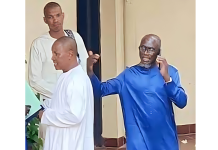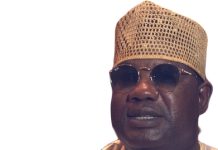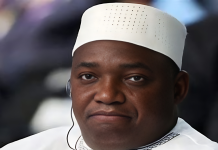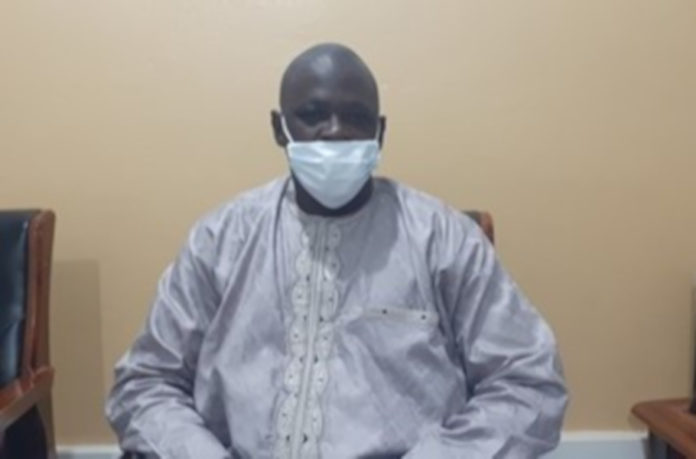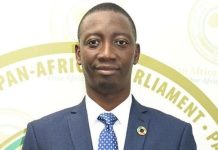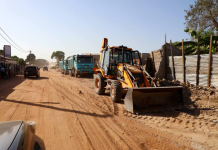By Momodou Jarju
Eighty-three thousand households in thirty districts across the country are to each benefit D6, 000 from a Gambia Government initiative supported by the World Bank dubbed The Gambia Social Safety Net Project.
The aforementioned project is a $31 million initiative.
The Executive Director of the National Nutrition Agency (NaNA), Pa Modou Phaal, in an exclusive interview with Foroyaa last Friday, revealed that the negotiations for the aforesaid project started in 2019 and implementation started in 2020.
Mr. Phaal explained that at the beginning of implementation of the project this year, they wanted to build a social secretariat at the office of the vice president, but the Covid-19 pandemic came and limited their movements.
“The Gambia Bureau of Statistics (GBoS) could not go and do their house listing and data collecting. And then we knew there was a state of emergency declared by the Government of The Gambia,” he said.
Director Phaal explained that the establishment of a social secretariat was to come up with a social registry whereby all extremely poor people in the country will be documented so that whoever wants to help them, will go to the social registry and be able to know the poor people and where they live.
Thereabout, Phaal said the Gambia Government introduced the food ratio package to help the poor people by giving them rice, sugar and oil amid the Covid-19 pandemic. Thus, he said they realized that the pandemic was going to affect the rural households most; as a result, they thought it fitting to complement the government’s effort with money transfer.
He said they then decided to take $10 million out of the $31 million- the total sum of the project to distribute it to the 30 districts.
Phaal remarked: “The 30 districts were supposed to be under the Social Resistance and those 30 districts will be equivalent to about 83, 000 households and for each households, we said why can’t each of them be given D1, 500 (per month) so that it will help them to complement what government has already provided in terms of the food.”
Director Phaal further said thereafter, they worked out the modalities for the implementation of the initiative they called NAFA QUICK. He said because they could not be in the field since they don’t have the households list, they used the government households list which the National Disaster Management Agency (NDMA) was using to distribute the rice amid the pandemic.
“But again, we worked with the governors to make sure that we got a very solid list so that the money goes to the people that it was supposed to serve. Bear with me here, is about households, is not individuals. If you are a household head and you live within those 30 districts of The Gambia, starting from Foni up to Basse, you are eligible to get D1, 500 (per month),” he said.
Asked why the Greater Banjul Area was exempted, Mr. Phaal said the poverty prevalence is greater in the rural area than the urban area. But he was quick to indicate that poverty is also present in the urban area, however, he emphasized that it is greater in the rural area.
Starting from July, August, September and October, Phaal said they will try to transfer a volume of D6, 000 to each of the targeted 83,000 households. Payment to be made in installment on every two months- meaning there is going to be two cash transfers.
“But the transactional cost will be very expensive if we want to do it every month. That’s why we say for the month of July-August; give them D3, 000 that would cover two months. Then September-October, you give them another D3, 000 which will cover two months and that would be four months,” he explained.
According to Phaal, the NAFA Quick project will span for four months, targeting 83, 000 households, adding the project which was supposed to last for five years may be short-lived due to the huge sum they have requested for the first year.
“Then we start working on the proper NAFA project, in which we are going to target 15, 600 plus households. But this one is a NAFA Quick one, we want to do it quickly, get to these households because around this time of the year things are very hard in upcountry. So we want to complement the rice, the sugar and the oil that the government has given them so that they can also use this money to buy whatever they want to buy with it, be it medication, paying fees… actually we want them to also increase their consumption so that they can keep their nutrition status up there, so that children, pregnant women will not suffer and even the elderly and everybody who live in the households will not suffer from all these infections which are coming,” he said.
Director Phaal hoped the remaining $21 million of the NAFA project will serve them another 18 months, after which they are targeting 15, 600 households as indicated above.
Mr. Phaal also said the cash transfer has already started.
He remarked: “Right now as I’m talking to you, some teams are in the Jarras, some have already crossed to CRR, so in the next one week, they may finish the Jarras and the CRR. They would come back here again, print the vouchers then go back and finish the URR. And that would be the first payment where by all those targeted households will receive D3, 000 and then we will go and do the second payment whereby they would be receiving another D3, 000 in total to make it D6, 000.”
What’s the mode of distribution?
Phaal said it is a direct transfer, but at their end, they produce coupons which they hand over to the Alkalolu of communities. He said it is going to be difficult to allow people to queue considering the covid-19 pandemic too, it would not be ideal.
“We printed some coupons and then we distributed this to the households using the list that NDMA provided to us. We took all those names, their telephone numbers, print them, went to the Alkalo or the village development committee, gave them the list and then the coupons so that they distribute it among the people who are in that community,” he said.
Phaal said the beneficiaries will receive the money from the Payment Service Provider (PSP), which is Reliance Financial Services.
Explaining why Reliance was contracted to be the PSP, Phaal said they approached couple of money company dealers like Reliance, JFM Money, Africell, Qcell, etc. but Reliance seemed to be more responsive. But nonetheless, he said their officials are also in the field to help Reliance in the distribution exercise.
Speaking further, Phaal said even with the list they gave the PSP and the vouchers, some people, who may not be part of the list, will come for the payment. On this situation, he said they have what they called Grievant Redress Mechanism, to address the issue.
Phaal explained that they have a desk for that kind of issue. The desk officer(s) will ask the personal details of the individual, including name, ID card and then a confirmation from the Alkalo or some elders of the communities, he added. He said if they attest that the person is a bona fide citizen of the community, the person would be registered and paid. The money is part of the $10 million.
What is NaNA’s Role?
Every project needs a fund holder. NaNA is the fund holder of the NAFA project. Phaal said the project is multi-sectorial, including the Department of Community Development and Department of Social Welfare- all of them are main partners working together. He also said they work with the Secretariat which is under the office of the Vice President, who also works with GBoS to ensure they do the social registry.
“For NaNA, we are the fund holder for Component 2 and Component 3 because this project is divided into three components. The first component is for the Coordination of Social Protection in The Gambia, which is also about establishing the Secretariat that is under the Office of the Vice President. Today if you go there, you will find a particular office that is responsible for the coordination of social protection in The Gambia that has already been established. Then component 2 is about the Cash Transfer and Social and Behavior Change Communication that is under NaNA. Then Component 3 is about Capacity Building, but as a whole right now, NaNA is responsible for the holding of the funds,” Phaal said.
Phaal also revealed that the whole money is not in The Gambia, but in Washington DC. They get it by requesting an amount of the money every quarter. The money is sent to the Central Bank of The Gambia and then they use that money to pay for the services they carry out.
He said they know that they are the fund holder but they cannot be in the field. Thus, they signed contract with a payment service provider, Reliance- who use their officials to execute the payment on behalf of NaNA.
NaNA hired 2M CORP Company to develop a database for the NAFA project. Phaal said the company looked at whether there were duplications of names and eliminated them. He said sometimes, since it is something people consider as free, they would like to get as much as possible.
Phaal said every payment made reflects in the database so that at the end of the day, they will do reconciliation between the number of people who were on their original list and the people who were paid in the field. He said this is to ensure every butut they paid out is accounted for.
Between 2.8% and 3.3% of the $10 million is the amount of payment Reliance should make as the PSP. About D26, 000 was paid to 2M Corp company for the creation of the database for the project.
Which are the 30 districts?
Phaal said the 30 districts that would benefit from the NAFA Quick include all districts in Foni, Central River Region and Upper River Region, while only Sabach Sanjal in North Bank Region will benefit in that region.
Meanwhile, Director Phaal revealed that the continuity of the distribution depends on the epidemiology of the deadly disease, Covid-19.
“Because if we begin to see more people getting infected, we will be tied, I don’t think people are going to risk their lives to be out there,” he said.

